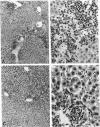Abstract
An aqueous extract of the plant Phyllanthus niruri inhibits endogenous DNA polymerase of hepatitis B virus and binds to the surface antigen of hepatitis B virus in vitro. The extract also inhibits woodchuck hepatitis virus (WHV) DNA polymerase and binds to the surface antigen of WHV in vitro. The extract, nontoxic to mice, was tested for antiviral activity in woodchucks (Marmota monax). In a trial using six long-term WHV-carrier woodchucks, five treated animals showed a faster decrease in woodchuck hepatitis virus surface antigen titer compared to one untreated control. In animals recently infected with WHV, the extract was effective when administered i.p. in three out of four animals in reducing and within 3-6 weeks eliminating both the surface antigen titer and DNA polymerase activity in serum. The treatment was discontinued after 10 weeks, and the treated animals have remained free of detectable markers of WHV for more than 45 weeks. In contrast, three untreated controls remained positive for both markers for WHV. One of the controls died after 8 weeks; the other two controls have remained positive for WHV markers for more than 45 weeks. In a third trial with long-term carriers, test animals treated subcutaneously with the extract for 12 weeks did not respond; but on switching the mode of administration to i.p., two out of the five animals showed a significant decrease in woodchuck hepatitis virus surface antigen titer compared to controls.
Full text
PDF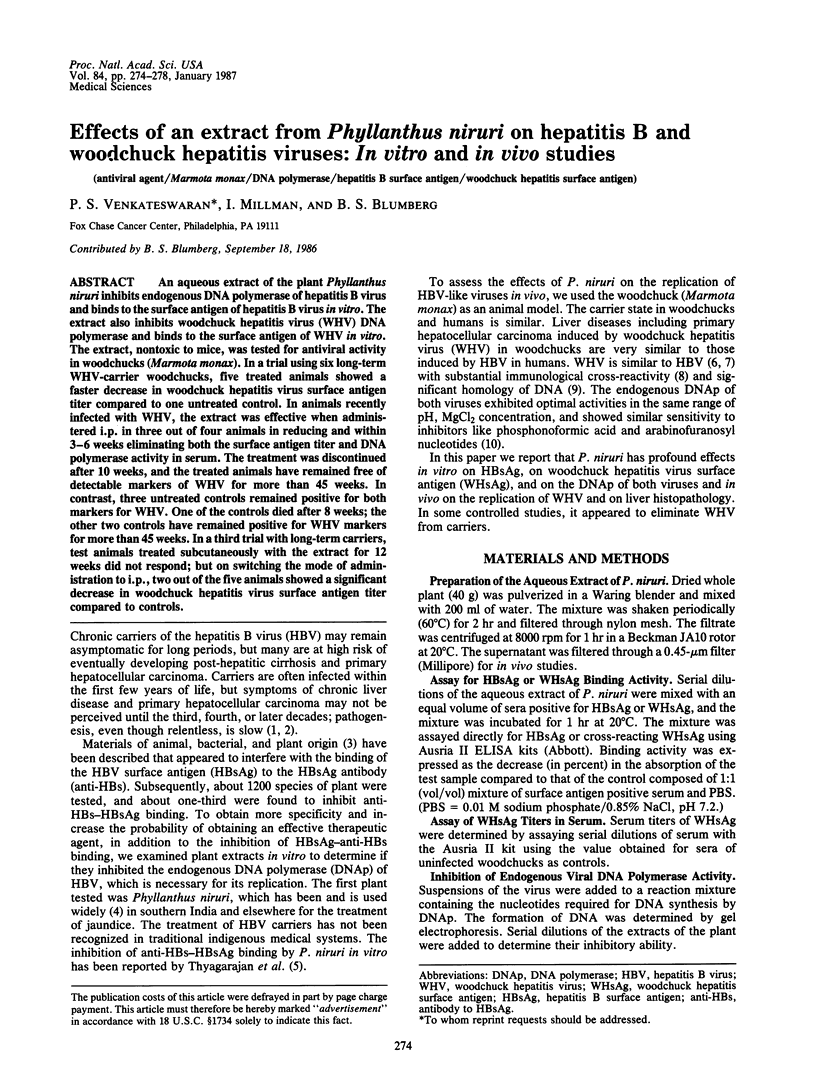
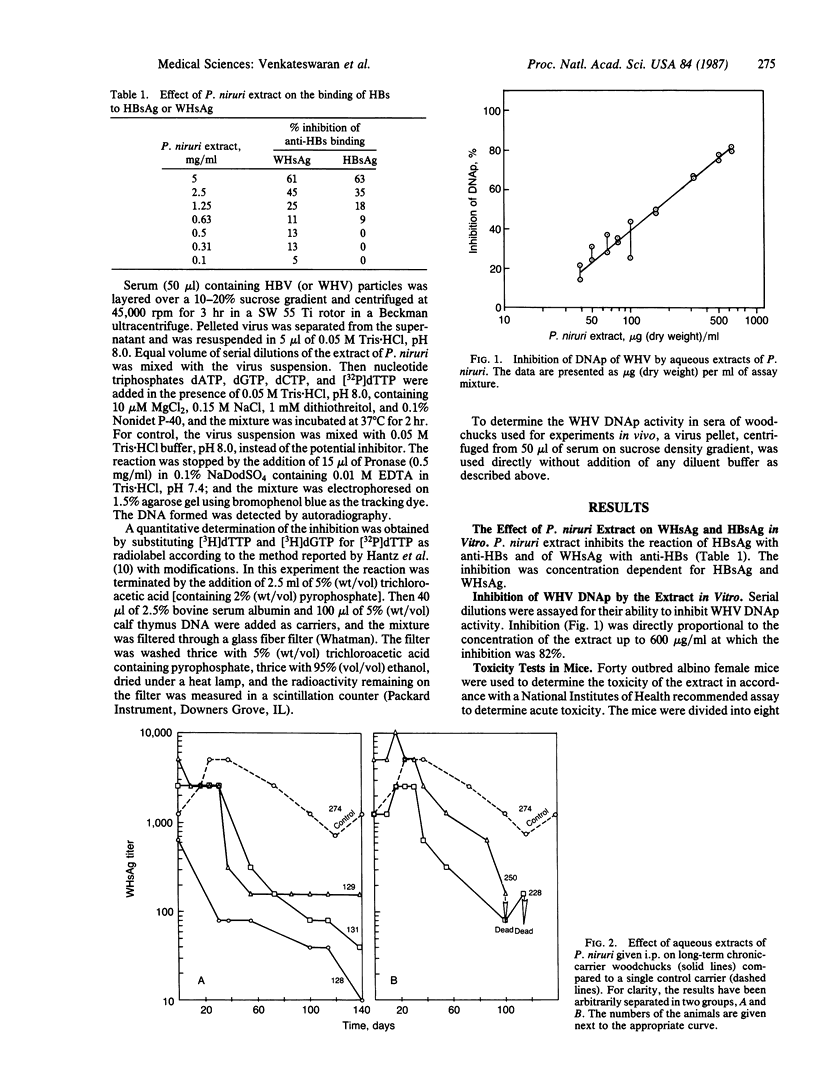
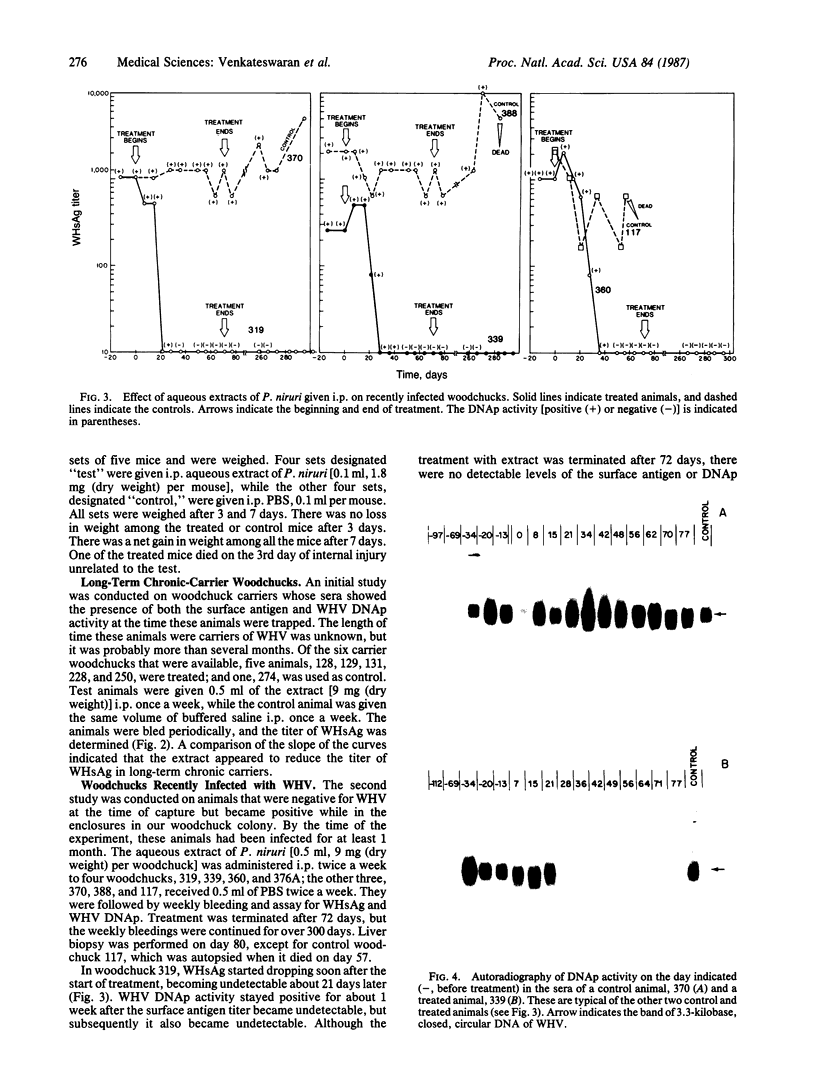
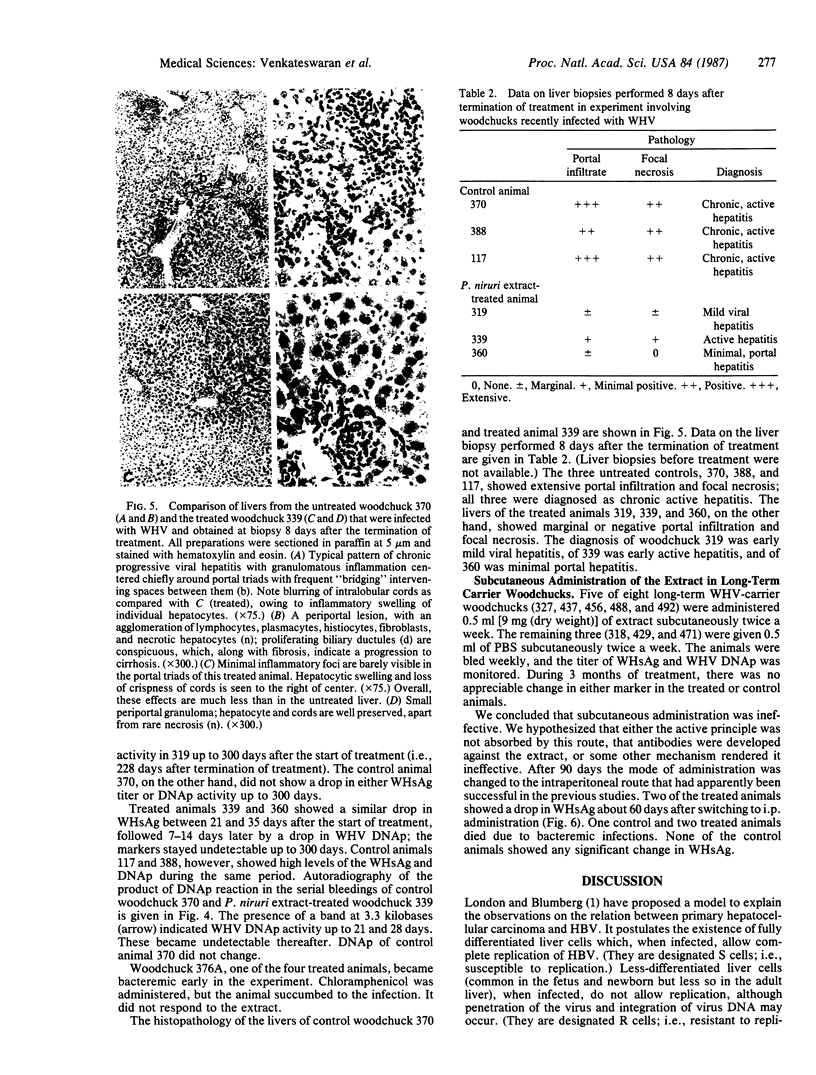

Images in this article
Selected References
These references are in PubMed. This may not be the complete list of references from this article.
- Blumberg B. S., London W. T. Hepatitis B virus: pathogenesis and prevention of primary cancer of the liver. Cancer. 1982 Dec 1;50(11 Suppl):2657–2665. [PubMed] [Google Scholar]
- Galibert F., Chen T. N., Mandart E. Localization and nucleotide sequence of the gene coding for the woodchuck hepatitis virus surface antigen: comparison with the gene coding for the human hepatitis B virus surface antigen. Proc Natl Acad Sci U S A. 1981 Sep;78(9):5315–5319. doi: 10.1073/pnas.78.9.5315. [DOI] [PMC free article] [PubMed] [Google Scholar]
- Hantz O., Ooka T., Vitvitski L., Pichoud C., Trepo C. Comparison of properties of woodchuck hepatitis virus and human hepatitis B virus endogenous DNA polymerases. Antimicrob Agents Chemother. 1984 Feb;25(2):242–246. doi: 10.1128/aac.25.2.242. [DOI] [PMC free article] [PubMed] [Google Scholar]
- Millman I., McMichael J. C. Glycoproteins of natural origin with an affinity for hepatitis B surface antigen. Infect Immun. 1978 Sep;21(3):879–885. doi: 10.1128/iai.21.3.879-885.1978. [DOI] [PMC free article] [PubMed] [Google Scholar]
- Millman I., Southam L., Halbherr T., Simmons H., Kang C. M. Woodchuck hepatitis virus: experimental infection and natural occurrence. Hepatology. 1984 Sep-Oct;4(5):817–823. doi: 10.1002/hep.1840040503. [DOI] [PubMed] [Google Scholar]
- Summers J., Smolec J. M., Snyder R. A virus similar to human hepatitis B virus associated with hepatitis and hepatoma in woodchucks. Proc Natl Acad Sci U S A. 1978 Sep;75(9):4533–4537. doi: 10.1073/pnas.75.9.4533. [DOI] [PMC free article] [PubMed] [Google Scholar]
- Thyagarajan S. P., Thiruneelakantan K., Subramanian S., Sundaravelu T. In vitro inactivation of HBsAg by Eclipta alba Hassk and Phyllanthus niruri Linn. Indian J Med Res. 1982 Dec;76 (Suppl):124–130. [PubMed] [Google Scholar]





